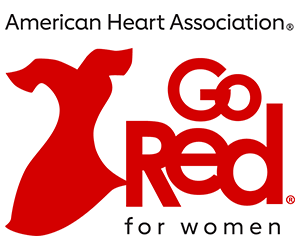Published on January 26, 2022

Joining with the American Heart Association, the Department of Public Affairs and Health recognizes National Wear Red Day for Women Friday, February 4th, 2022 as an opportunity to learn more about Heart Disease, a leading cause of death in the U.S. by raising awareness to look for the warning signs in an effort to empower and inspire everyone by uniting a common goal to end cardiovascular disease and improve overall well-being.
National Wear Red Day for Women is supported by the American Heart Association and celebrated in conjunction with National Heart Health Month encouraging everyone to don the color red in order to raise and spread awareness in hopes to eradicate heart disease and stroke in millions of women all over the nation.
Cardiovascular disease causes 1 in 3 deaths in women every year making it the number one health related killer in women. The good news is 87% of all heart issues are believed to be preventable making awareness, education, research, and resources vital to the cause this holiday supports. Regular exercise and a healthy diet can reduce your chances of heart disease by as much as 80 percent.
There are some common symptoms whether the issue is a heart attack, angina, or heart failure. Some similar symptoms include chest pain, shortness of breath or difficulty breathing, nausea and/or stomach pain, and light headedness to name a few.
Signs and Symptoms of Heart Attack
If you have any of these signs, call 9-1-1 and get to a hospital right away.
- Uncomfortable pressure, squeezing, fullness or pain in the center of your chest. It lasts more than a few minutes or goes away and comes back.
- Pain or discomfort in one or both arms, the back, neck, jaw or stomach.
- Shortness of breath with or without chest discomfort.
- Other signs such as breaking out in a cold sweat, nausea or lightheadedness.
- As with men, women’s most common heart attack symptom is chest pain or discomfort.
But women are somewhat more likely than men to experience some of the other common symptoms, particularly shortness of breath, nausea/vomiting and back or jaw pain.
Signs and Symptoms of Stroke
If you have any of these signs, call 9-1-1 and get to a hospital right away.
- Sudden numbness or weakness of the face, arm or leg, especially on one side of the body
- Sudden confusion, trouble speaking or understanding
- Sudden trouble seeing or blurred vision in one or both eyes
- Sudden trouble walking, dizziness, loss of balance or coordination
- Sudden severe headache with no known cause
Share on social media to encourage others … Join the conversation with the hashtags #WearRedDay, #GoRedforWomen, #HeartMonth
Follow the American Heart Association (@AmericanHeart) and Go Red for Women (@GoRedforWomen) on Instagram, Facebook, and Twitter.
Source: www.goredforwomen.org; Advancing Heart, Lung, Blood, and Sleep Research & Innovation | NHLBI, NIH

